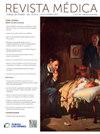当雷诺现象伴随着可怕的数字溃疡时:两例报告
IF 0.4
Q4 MEDICINE, GENERAL & INTERNAL
引用次数: 0
摘要
雷诺氏现象(RP)是一种血管痉挛性疾病,通常由寒冷或压力引发,由于血管过度收缩导致手指颜色变化。据描述,患病率为5%至14.5%。5% - 10%的RP患者会发展为自身免疫性疾病,如系统性硬化症、系统性红斑狼疮或类风湿关节炎。与此相关的是,大约50%的系统性硬化症和RP患者会经历手指溃疡,这可能导致相当大的疼痛和功能损害。本文描述的临床病例对应于一名33岁的女性和一名18岁的男性与RP和指溃疡。尽管接受了医学治疗,这名女子的病情并没有好转,而这名男子则经历了病变的愈合。射频的病理生理学涉及遗传和环境因素,数字溃疡的管理需要多学科方法,将医疗护理与伤口护理和血管扩张剂的使用相结合。虽然很罕见,但数字溃疡是一个重大挑战,需要进一步研究和更好的治疗方案。本文的目的是描述临床特点,实验室,补充研究,治疗和演变的两个病人的数字溃疡。本文章由计算机程序翻译,如有差异,请以英文原文为准。
Cuando el fenómeno de Raynaud se acompaña de las temidas úlceras digitales: reporte de dos casos
Raynaud's phenomenon (RP) is a vasospastic disorder, often triggered by cold or stress, that causes changes in the color of the fingers due to excessive vasoconstriction. A prevalence ranging from 5% to 14.5% has been described. Between 5% and 10% of patients with RP develop autoimmune diseases, such as systemic sclerosis, systemic lupus erythematosus, or rheumatoid arthritis. Of relevance, approximately 50% of patients with systemic sclerosis and RP experience digital ulcers, which can cause considerable pain and functional impairment.
The clinical cases described in this article correspond to a 33-year-old woman and an 18-year-old man with RP and digital ulcers. The woman showed no improvement despite medical treatment, while the man experienced healing of his lesions.
The pathophysiology of RF involves genetic and environmental factors, and the management of digital ulcers requires a multidisciplinary approach, combining medical care with wound care and the use of vasodilators. Although rare, digital ulcers represent a significant challenge that needs further research and better treatment options.
The aim of this paper is to describe the clinical features, laboratory, complementary studies, treatment and evolution of two patients with digital ulcers.
求助全文
通过发布文献求助,成功后即可免费获取论文全文。
去求助
来源期刊

Revista Medica Clinica Las Condes
MEDICINE, GENERAL & INTERNAL-
CiteScore
0.80
自引率
0.00%
发文量
65
审稿时长
81 days
 求助内容:
求助内容: 应助结果提醒方式:
应助结果提醒方式:


